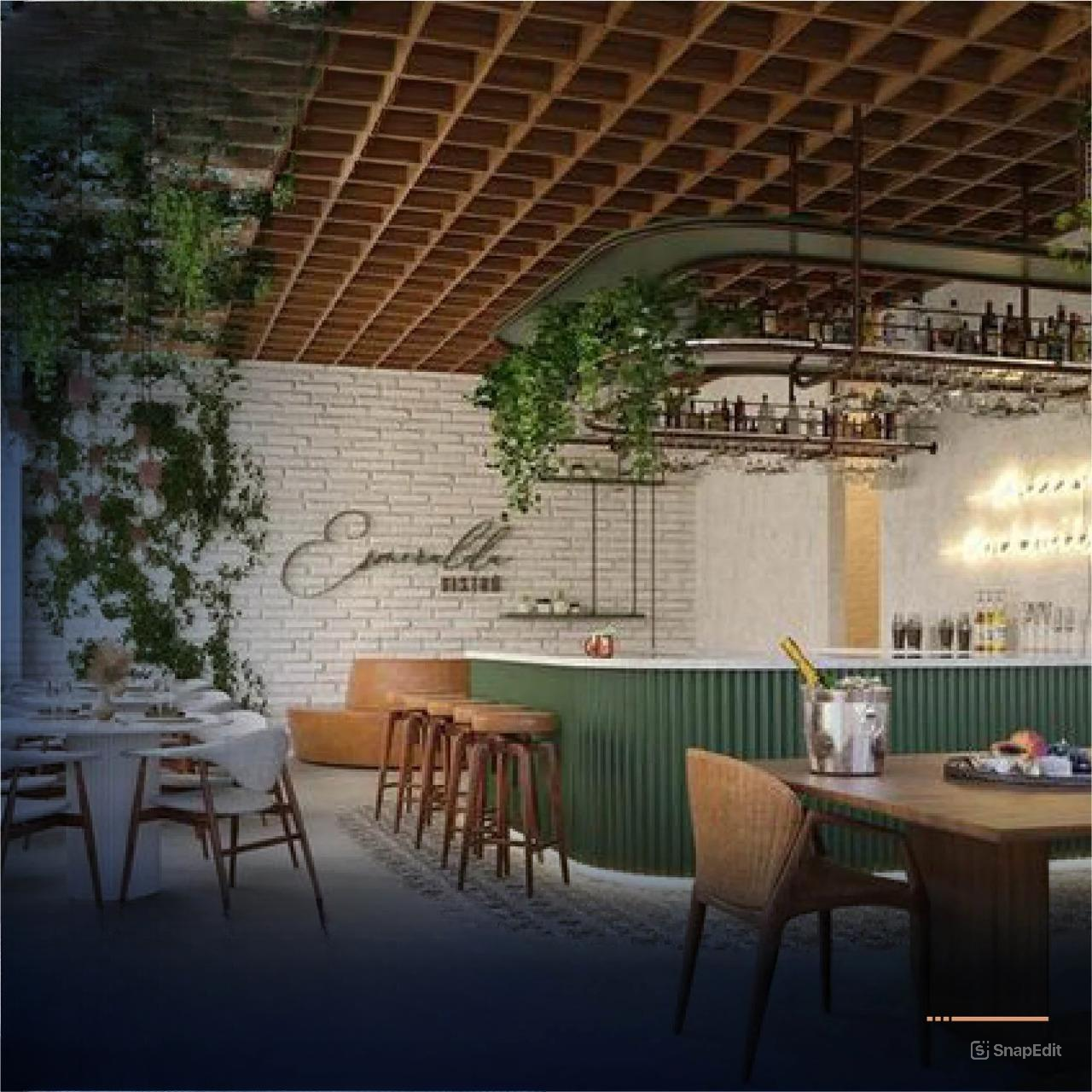- September 28, 2024
- 0
- Restaurant design
The foundations of restaurant design that leave an unforgettable impression

In a world of noise and fast-paced daily life. dining experiences have become important moments that leave a special and unforgettable impression. Restaurant design has become an art that goes beyond the preparation of delicious food. It plays a crucial role in defining those exceptional experiences. It is a unique combination of colors, furniture and lighting. creates not only a dining environment but also a story to tell visitors. Restaurants today are attracting diners not only with delicious food but also with a design that reflects the identity of the place and carries an artistic message. In this context. Many people ask, what are the fundamentals of restaurant design that make restaurant design memorable? How can the environment leave a deep mark on visitors’ memories? This article explores restaurant design principles that aim to create a memorable experience. immersed in an artistic world that harmoniously combines tastes and aesthetics.
Fundamentals of restaurant design
Restaurant design fundamentals are an essential part of the customer experience.
It can greatly affect the overall atmosphere and the final impression of visitors.
Here are some key principles to consider when designing a restaurant that aims to make a memorable impression:
Visual identity:
Defining your restaurant’s identity includes choosing a logo and colors that reflect its personality. The identity should be visually strong and distinctive.
Space planning:
Effective space planning contributes to a smooth flow of customers and makes the place cozy. Layouts should allow for a unique dining experience.
Good lighting:
Lighting isn’t just a way to see the food. It also plays a role in creating a certain atmosphere. Lighting can be used to define certain areas and create different atmospheres.
Decoration and interior design:
The choice of décor and interior design reflects the restaurant’s style and contributes to making visitors feel comfortable and relaxed.
Suitable furniture:
The furniture should fit the style of the venue and provide comfort for customers. Whether it’s at the level of tables and chairs or even individual seats.
Aesthetic details:
Aesthetic details such as decorations works of art. and plants can be part of the plan to decorate the place and make it unique.
Menu and display:
Design an attractive menu that enhances the customer experience. Presentations can be used to highlight specific dishes.
Technology and interaction:
Technology can be creatively integrated to improve visitor engagement. whether it’s in terms of the ordering system or providing an interactive experience.
Music and smells:
Careful music selection and the use of pleasant scents can add an extra layer to the dining experience.
Team training:
The staff plays an important role in delivering a positive experience. Employees should be aware of design details and how to optimize the customer experience. In a nutshell. restaurant design is not just a matter of aesthetics. It’s about creating an integrated experience and memorable moments for visitors. Many elements interact to create an exceptional dining experience.
